
The Art of Mixing (David Gibson)
.pdf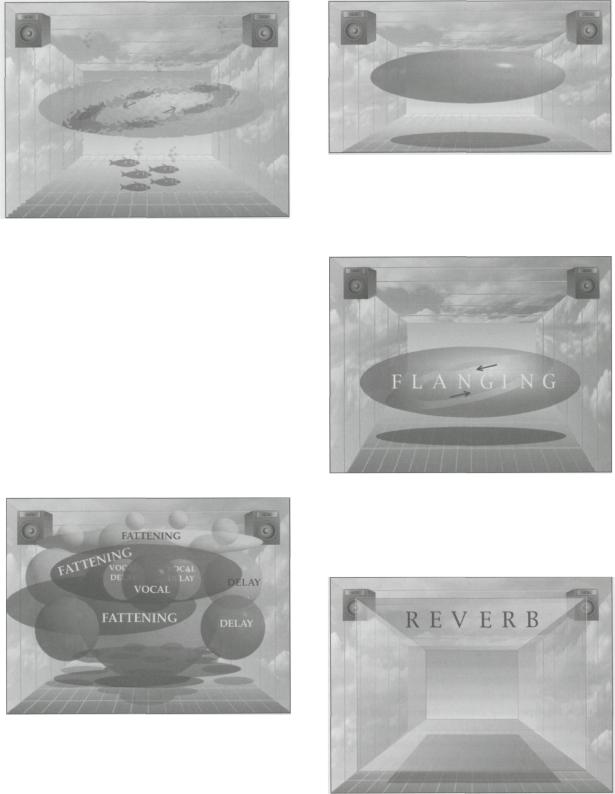
And flanging brings up a floating, underwater-type feeling.
As previously covered, fattening stretches a sound between the speakers, filling out the mix.
Visual 209. Underwater Flanging
When you change the parameters of the effect, you also change the feeling that it creates ever so subtly. The trick to getting to know the intricacies of the feelings that different effects create is to simply play with them. As with any instrument, practice makes perfect. Get to know your tools. Get to know them so well that you can then create art with them.
Regardless of the type of feeling that an effect adds to a mix, time-based effects, such as delay, flanging, chorusing, phasing, and reverb, all add more sounds to the mix, filling out the space between the speakers. Therefore, they all add a dynamic of fullness to a mix. The question is whether more fullness is appropriate for the style of music or song.
Visual 210. Mix With Lots of Different Delays Filling
Out Mix (see color Visual 210C)
Visual 211. Fattening
Flanging, chorusing, and phasing are also based on short delay times, so they, too, will tend to make the mix sound bigger and fuller.
Visual 212. Flanging
And, of course, reverb is really made up of hundreds of delays, so it takes up a lot of space in a mix and fills out the mix tremendously.
Visual 213. Reverb
112
The Art of Mixing
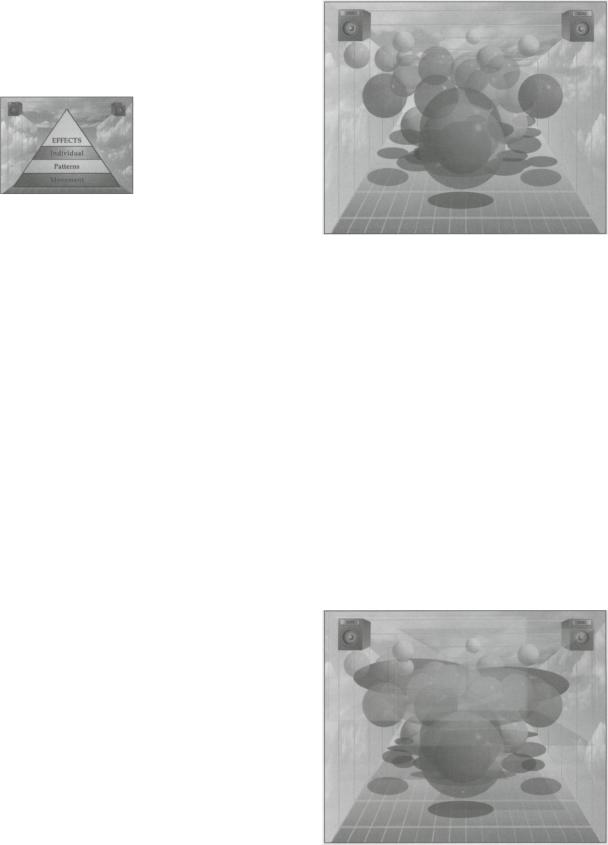
All effects make a mix fuller, bigger, and badder (depending on your perspective). However, they also make a mix busier, so watch out.
Level 2 Dynamics: Patterns in Effects Placement
Time-based effects add extra sounds to the mix. When you add a delay, you now have two sounds. Add feedback and you could have ten sounds. Add reverb and you have added hundreds of sounds (delays). Therefore, when you add multiple effects, you can very easily and quickly fill out this limited space between the speakers.
SPARSE MIXES
Sometimes you add very few effects to keep the mix clear and sparse, with plenty of space between each sound. For many styles of music, like folk, bluegrass, and many forms ofjazz, it is required that there are virtually no effects to obscure the pure clarity of the natural sounds. Also, you shouldn't obscure the natural beauty of a pure song, if that is what you have. After all, it is the song that counts.
FULL MIXES
Sometimes it is appropriate to use effects to make a mix sound fuller and bigger, like a wall of sound. Many styles of music, such as new age, alternative rock, and heavy metal, often have a large number of effects to fill in all the spaces between the sounds, creating a full mix. In some songs, the entire song is about effects. This is often the case with rap, hip hop, techno, and space rock. In this case, it is fine to have a ton of effects.
The main thing that makes a mix sparse or full is actually the number of sounds and notes in the song. Some songs have a busy arrangement in the first place; while others have a sparse arrangement. Therefore, when you approach a mix, one of the first steps is to check out the density of the arrangement. If there is a lot going on in the arrangement, you normally use fewer effects, simply because there is not enough room left between the speakers. This is commonly the case with salsa and symphonies where so much is already going on. The music of the Talking Heads is another good example of busy arrangements with clean mixes.
Visual 214. Extremely Busy Mix With No Effects (see color Visual 214C)
However, there are times when you might want to make a busy arrangement even bigger. Often bigger is better with new age, alternative rock, heavy metal, and other hard rock. The more powerful, the more awesome. Therefore, you might consider adding effects to such a mix even if things are already crowded. Forty-eight guitars may not seem so clean and clear, but it creates such a massive wall of sound that it can blow people's minds.
It was Phil Spector who was first known for creating this style of mix. In fact, he even did it in mono. For the longest time, everybody was addicted to clarity. Then Phil started adding more and more instruments to the mix and started using reverb to really fill out the space between the speakers. His mixes were dubbed "The Wall of Sound." These days we have taken this concept to the extreme. You might take a moment to think of the songs you know that have a busy arrangement with a full mix.
Visual 215. Extremely Busy Mix With Lots of Effects (see color Visual 215C)
113
ChapterFive
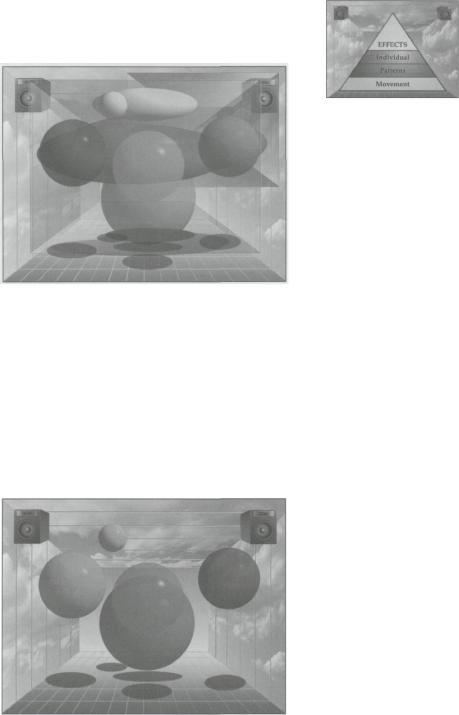
On the other hand, if the arrangement is sparse in the first place, and if the tempo is slower, you have plenty of room for effects. You could use fattening to fill out the space between the speakers. This just might mean the difference between a garage band sound and something that sounds like a real CD.
Visual 216. Extremely Sparse Mix With Fattening and Reverb (see color Visual 216C)
Occasionally, an extremely sparse arrangement is left that way. In this style of mix, every single sound is completely separate from every other sound in the mix. This makes each sound easily distinguishable from all the other sounds. As mentioned, bluegrass, acoustic jazz, and some folk music are commonly mixed this way. Steely Dan is a good example of this style of mixing: Very few effects are used to create as clean and clear of a mix as possible.
Visual 217. Extremely Sparse Mix With No Fattening and Reverb (see color Visual 217C)
A full or sparse mix might be appropriate depending on the type of person you are working with, the nature of the song, and of course, the style of music.
Level 3 Dynamics: Changing Effects (Types, Levels,
and Parameters)
Changing the levels of effects or the parameters of effects during the mix is one of the most intense dynamics you can create. It is such a strong dynamic, it must certainly be appropriate in every way.
There are a number of ways that you can create movement with effects. You can turn up a delay on the end of a word, word, word or add reverb on the end of a solooooo. You could add flanging to a line in a song about "floating through life." Or take all the reverb off a particular line to make it more up front and personal.
Adding or taking away an effect, or just changing the level of an effect, is such a strong dynamic that it often becomes the sole focus of attention for the moment. Therefore, the effect should be done skillfully, so that it fits in with the song and the music. Some performers, like Frank Zappa, Mr. Bungle, and even Pink Floyd, have actually created songs based around changing effects.
You can simply turn the amount of effects in the mix up or down, but you can also change the type of effect or change the parameters within each effect. The capabilities of doing this are much simpler now with MIDI controllable effects. You could actually have the effects change based on the pitch of the note being played. Or you could use some sort of MIDI controller to play the effects like an instrument.
Of course, you can only create such overwhelming dynamics if the band will let you. You might keep a lookout for those bands that write songs with changing effects in mind. This is why rap, hip hop, and techno can be so much fun to mix.
Even if a song doesn't have completely different sections where you can use completely different effects, you can still create subtler variations between the sections of a song. You might add a little more reverb to the snare for the chorus section of the song, change the type of reverb on the snare for a lead break, or add fattening on the lead vocal during the chorus. Commonly the reverb on the snare is boosted ever so slightly at the end of a song when it gets rocking.
114
The Art of Mixing
It is extremely cool to create subtle differences in various sections of a song, so when someone is listening closely they will hear more detail. When they listen over and over and over, they will always hear something new and will never get bored.
115
Chapter Five
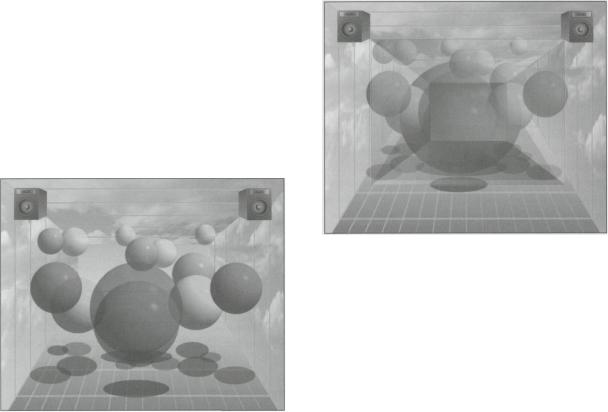
C H A P T E R 6
Styles of Mixes
We have now covered the levels of dynamics that can be created with the four tools in the studio—volume, EQ panning, and effects. You can stack effects, then use volume, panning, and EQ to place the effects in various places. But when you use the four tools together to create a certain style of mix, it's even more powerful. The most powerful effect is when the four tools together create a certain style of mix and then are changed to a different style of mix in a single moment.
USING COMBINATIONS OF MULTIPLE SETTINGS TO CREATE HIGH-LEVEL DYNAMICS
You can make an instrument more present and out front by using volume. Compression will make it more stable so that it seems even more present. If you brighten it a bit with EQ, it will be clearer, and keeping it clean with no effects makes it more present. Panning it to the center will also help. And if it's spread in stereo, it will really seem like it's your face. Using all of these techniques simultaneously will make the sound jump right out of the speakers.
To make a sound come even further out front in a mix, start with a mix that has a good amount of reverb in it. Then, take the reverb off and the sound will seem to move forward. This can make a sound jump so far out front it seems like it could smack you in the face.
If you want to put a sound in the background, do just the opposite: turn it down, make it dull with EQ, pan it to one side, and add long delays and reverb.
Visual 219. Distant Mix
You can also send a sound out for delay, have it return on a channel of the console, send the delayed signal to the reverb, and then pan the reverb separately from the delay (both ofwhich might be in a different place from the original dry sound). The volume of the delay compared to the reverb can be adjusted to make the nuances fit your taste. You could even EQ the delay differently from the reverb and from the original dry sound.
Visual 218. Clean and Clear Mix (see color Visual 218C)
116
The Art of Mixing
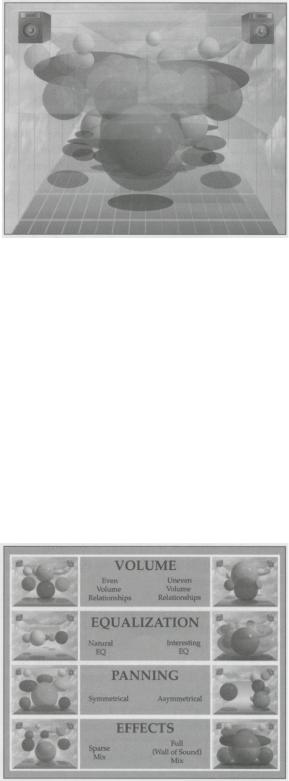
An especially effective trick is to turn up the feedback on the delay before it is sent out to the reverb, then take the delay out of the mix by unassigning the mix button (if you simply turn off the delay channel, it will also turn off the signal going to the reverb). What you end up with is reverb with a really long predelay and feedback. It is an extremely smooth effect that, when put on a vocal, makes it sound like you have a vocal synth in the background. Many guitarists, including David Gilmore, like it on their guitar as well.
Another interesting effect is to send the output of flanging, chorusing, or phasing to a reverb unit. This is often much nicer than simply putting these effects and reverb in the mix.
One of the most interesting combinations of effects is to send out for fattening (flanging, chorusing) on a sound, and then send the fattening to a 3D sound processor, surround sound, or multiple speakers. This way you can bring the fattening effect out in front of the speakers or even behind you.
A similar effect is to send reverb to the 3D sound processor, surround sound, or multiple speakers. You can make the reverb sound extremely spacey by putting it out in front of the console (right in front of your nose—but in stereo).
One of the most exhilarating effects is to put a delay with lots of feedback in the 3D sound processor and use the joystick to rotate it around the room (what a business we're in, huh?).
There are certainly a huge number of really cool combinations of effects. See if you can come up with some new ones on your own. If you come across anything that is death-defying—or just really nice—let me know (e-mail: virtmixr@hooked.net) and maybe I'll put it in the next version of the book.
CREATING A CONTEXT OR STYLE OF MIX
By using all of the tools together to create combinations of dynamics, you can create all the different styles of mixes in the world. One style of mix is the wall of sound.Just using multiple effects will fill in the space between the speakers quite well; spreading sounds in stereo with delays or adding reverb will quickly fill in every hole in the mix. But, when you also boost the low end a little on each of the sounds, they will all take up more space. You can also use panning to spread sounds in stereo if the two sounds are similar (like when you have two mics on a guitar amp); then, when you pan the two sounds completely left and right, they will pull together so that the sound is stretched between the speakers—making the mix much fuller. Panning sounds so that they overlap a bit makes a stronger wall of sound. If you have very few sounds in the mix, making the volumes more
117
even will contribute to a fuller mix. On the other hand, if you have a really busy arrangement, uneven volume placement will actually take up more space, creating a fuller mix.
Visual 220. Making Mix Fuller
Because the main thing that makes a mix full in the first place is the number of sounds and notes in the song, you can help make the mix fuller by having the band play more parts. For example, you might have the band doubletrack or play the same part three times. Multiple mics on one sound can also add to the density of the mix.
As you can see, using all of these techniques together can build a huge mix. On the other hand, if you want a mix to be sparser, cleaner, and clearer, do the opposite: fewer sounds, fewer effects, brighter EQ, wider panning, and appropriate volume settings.
With these four tools we can create the following dynamic patterns. These are some of the emotions and feelings that we can create with the technical equipment in the studio.
Visual 221. Dynamic Ranges Using 4 Mixing Tools
Chapter Six
By changing any of these tools in real time, we can create additional movement and much more intense dynamics. And we can use all four tools to create an incredibly powerful dynamic.
For example, if you're mixing a love song, you could set the relative volumes even so that nothing jumps out and shocks, so that the mood of the emotion is not disturbed. You could set the EQ so that nothing is too irritating in the midranges, everything is nice and bright, and there isn't too much bass to blow the mood. We could set the panning so that it is balanced. We could use very few effects, so that the mix is clean and clear. And we could refrain from creating any unnecessary movement with the faders, panpots, EQ, or effects so as to not spoil the mood. Using all of these tools together can create an intensely beautiful dynamic appropriate for the song.
On the other hand, if you're mixing some wild rock 'n' roll or exotic techno, you could set uneven volume relationships, so that we would have soft sounds followed by loud sounds, creating a very exciting dynamic. ROCK 'N' ROLL!!! You could set EQ to get lots of highs and lows. And you could EQ some sounds so that they cut through and are edgy in the midrange, making the whole mix jump out and grab your attention, forcing you to dance. You could set the panning to be unbalanced, creating tension and making the mix unusual. You could also add several different effects, making the mix interesting at every single moment.
Let's have some serious fun. Enough of the status quo. We could have things zooming left and right with panning, volumes going up and down, EQ changing throughout the mix, and effects and their parameters going up and down, as well as their parameters changing constantly. Using all of these tools together, we can create an intensely beautiful dynamic totally appropriate for the song.
These are two extreme types of mixes that we could create with all of the tools and equipment in the studio, and all mixers in the world fall between these two extremes.
CHANGING THE STYLE OF MIX IN THE MIDDLE OF THE SONG
More intense, however, is when you create a certain style of mix, then, using the four mixing tools, completely change all the parameters, creating an entirelydifferentstyle.
The rock group Yes did it with "Owner of a Lonely Heart." They play a screaming electric guitar sound and, in a single moment, change to a '50s style recording of a drum set, miked twenty feet away with a dull EQ. Then all of a sudden, they return to a screaming guitar/synthesizer type of sound that is
extremely edgy. Sudden changes in multiple mix parameters can be extremely effective.
Sting also did it with the song "Englishman in New York." The song goes from a jazzy groove—very few effects, very clean, small snare sound—to a huge drum sound with tons of reverb instantly. Then, in a flash, it is back to the simple, clearjazz mix.
Of course, you can only create such dramatic mix dynamics if they are appropriate for the song. This was obviously one of Frank Zappa's favorite techniques, and Mr. Bungle has taken this concept to the extreme; every 30 seconds, the song and the mix change completely.
To change the entire mix in a single moment can be shocking. It can blow people's minds. It can show people that their reality is just an illusion that can change at any moment. But best of all, it shows perspective. It shows people that they don't need to stay stuck in their current reality. They only need to put a different mix on the situation.
All the mixes in the world are created with just these four tools: volume, EQ panning and effects. It's what you do with them that counts.
118
The Art of Mixing
C H A P T E R 7
The Relationship of Musical Dynamics Created by Equipment to the Musical Dynamics Found in Music and Songs
Now that we have discussed all the dynamics that can be created with the technical equipment in the studio, let's return to the basic concept: The art of mixing is the way in which the dynamics we create with the equipment in the studio interface with the dynamics apparent in music and songs. You can now begin to explore all the different relationships between mixing dynamics and the dynamics that people perceive in music. The trick is to remember what you did when you find something that you really liked in a mix.
Remember what you do—especially when what you do creates magic! After a couple of years of keeping track of the magic, you become a magician.
Putting It All in Perspective
Now you know what is required of a recording engineer. Besides learning the technical side of the equipment and how to work well with a wide range of strange, unusual, and wonderful people, a recording engineer also deals with refining a diverse array of aspects—even the music itself. The mix is only one of many aspects that contributes to a great recorded piece of music.
You've learned many of the details of the dynamics that can be created with studio equipment. You now have a mixing framework, designed to include all of the musical possibilities, to help you get a good perspective on all that you can do in the studio.
Just as a great musician must, at some point, learn
and incorporate aspects of theory and technique into his or her actual playing, so must the aspiring recording engineer incorporate theory into practice. This process varies for different people. Some people are fanatics (driven by parents, childhood experiences, or from something above), will take the bull by the horns and study until they are blue in the face, and have it all down. Others will incorporate the aspects that stick out in their minds the most. One or more ideas will sneak into your recording projects over the next few months. You might also reread some sections of this book from time to time and gather a few more tidbits to incorporate. Regardless of your style of learning and how you incorporate this learning into practice, you now have an overall structure to see all that an engineer does, and you can focus on what it takes to become great at it.
The trick is to use the dynamics created by the equipment to enhance, accentuate, highlight, support, create tension or just let the music itself shine through (whichever is appropriate for the song and style of music). The way in which these dynamics interface with the music is the art of mixing. The art of the recording engineer is to seek out the relationships between the equipment and the music that are the best—whether they be magical, beautiful, amazing, world-changing, people-changing, or just cool.
Don't stop until you get goosebumps.
Different people have different ideas of what great art is. The point is to develop your own values about what you think is great art. Then, make it!
119
Chapter Seven
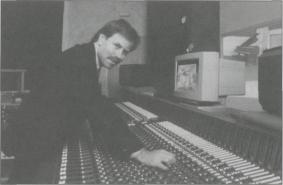
About the Author
David Gibson has been teaching, engineering, and producing groups in major 24-track studios since 1982 and is the founder and owner of California Recording Institute in San Francisco. Before that, he taught recording at Cabrillo College in Santa Cruz for five years. He has been using the concepts and visuals presented in this book in his classes since 1986.
Previously, Gibson owned a commercial music production company called Creative Music Services in Atlanta, Georgia. He has recorded manyjingles for the Santa Cruz Boardwalk.
David has also done recording forJames Brown's band, Bobby Whitlock (Derek and the Dominoes), the Atlanta Rhythm Section, and Hank Williams Jr.'s band, as well as having worked with members of the Doobie Brothers, LacyJ. Dalton's band, Herbie Hancock's band, and It's a Beautiful Day.
Gibson co-produced a double album with Jonathon Segel of Camper Van Beethoven and has produced a variety of other albums ranging from new age to heavy metal to hip hop and techno music.
Gibson is also the inventor of the patented "Virtual Mixer," which displays a mix visually in real time. He created a customized version on the Silicon Graphics computer that shows the visuals in 3D with 3D glasses.
121
About the Author
Appendix A
Dynamics Created by Studio Equipment Categorized by Emotional Effect
The key is to establish a connection between the technical equipment in the studio and the feelings and emotions found in music. The following chart will help you understand this concept. The middle column shows the tools. Columns two and four show the types of dynamics that can be created with the tools. And columns one and five show the types of feelings and emotions created by the dynamics.
|
Evenvolume |
|
Volumerelationships |
|
Mellow Emotions |
relationshipswithlittle |
|
that vary drastically |
Intense Emotions |
ordered |
variation between each |
|
between sounds and |
interesting |
structured |
sound and successive |
Volume |
from section to section |
exciting |
even |
sounds from song |
|
|
wild |
fun |
beginning to end |
|
Interesting EQ between |
creative |
gothic |
|
|
instruments calls |
crazy |
stable |
Natural EQ between all |
|
attention to particular |
new |
normal |
instruments; they all fit |
Equalization |
ones because they |
fun |
romantic |
well together and are |
|
sound noticeable |
unbalanced |
balanced |
"natural," as if you were |
|
"different," unnatural, or |
complex |
simple |
there |
|
unique |
|
|
Balanced, symmetrical |
Panning |
Unbalanced, |
|
|
placement |
|
asymmetrical placement |
|
Positive Values |
|
|
|
Positive Values |
warmth |
Dry, clearly EQ'd, |
|
Wet, bassy, and "full" |
fun |
peace |
uneffected instruments, |
|
EQ; fattened, thickened, |
creativity |
love |
placed in positions in |
Effects |
and delayed sounds, |
catharsis |
security |
the mix to be separate |
|
placedoverlapping posi- |
intrigue |
atmosphere |
from each other, leaving |
|
tions in the mix, leaving |
perspective apparent |
centeredness |
"space" between the |
|
no "space" unfilled |
|
|
sounds |
|
between the speakers |
Negative Values |
Negative Values |
|
|
|
frenetic |
boredom |
Use of compression |
|
Panning,changing |
crazy |
triteness |
makes the image of the |
Stabilization vs. |
volumes, adding or |
annoying |
status quo |
sound more stable |
Movement |
changing EQ, and |
psychotic |
commercial |
because it moves less |
|
changing effects make |
abnormal |
simple |
|
|
the sounds less stable |
|
122
The Art of Mixing
